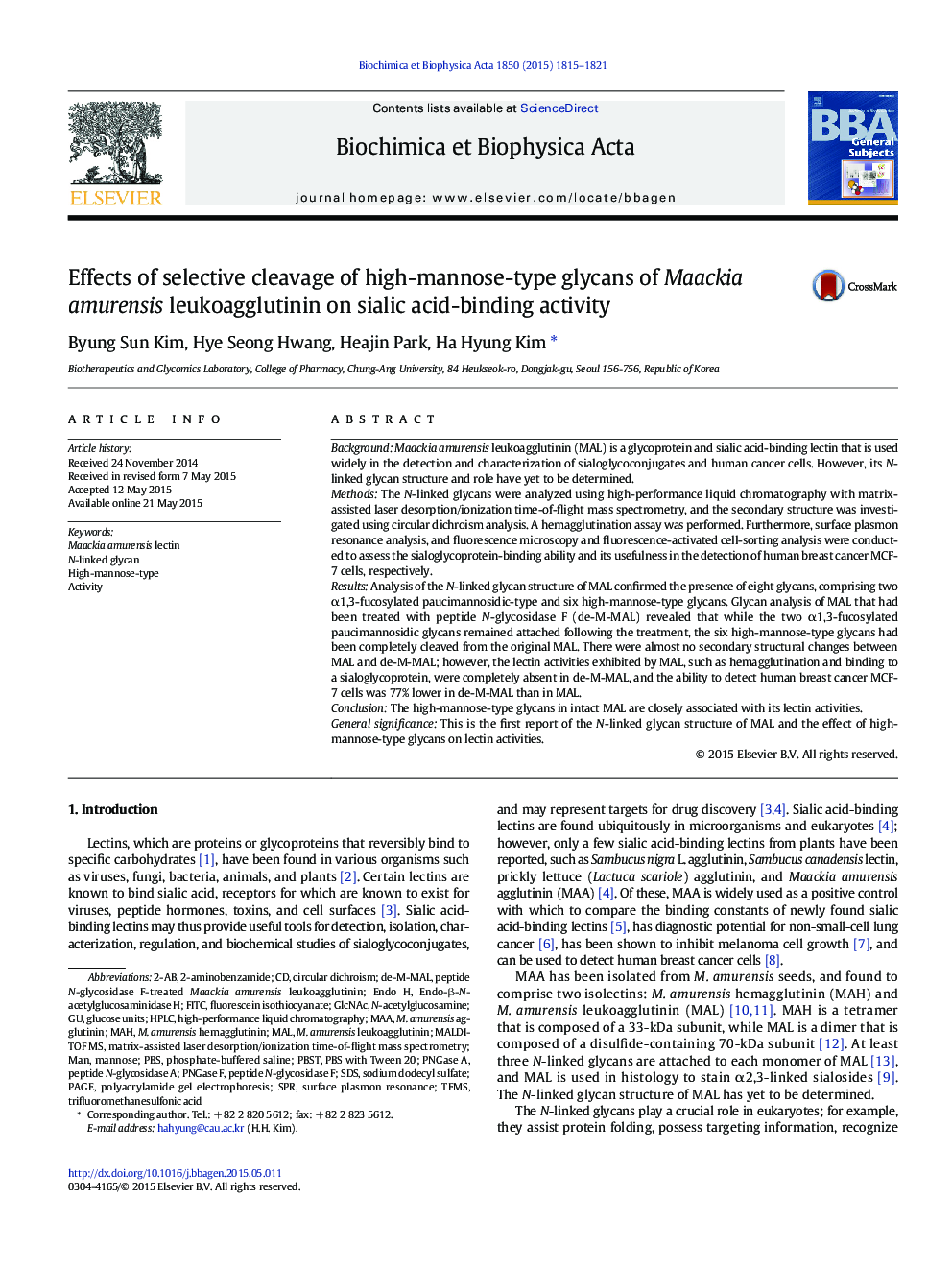| Article ID | Journal | Published Year | Pages | File Type |
|---|---|---|---|---|
| 1947467 | Biochimica et Biophysica Acta (BBA) - General Subjects | 2015 | 7 Pages |
•The effects of glycans on the lectin activity of MAL have not been reported.•The prepared de-M-MAL selectively cleaved high-mannose-type glycans from MAL.•de-M-MAL contains only α1,3-fucosylated paucimannosidic-type glycans.•The MAL activities were almost completely absent from de-M-MAL, with no structural changes.•Presence of high-mannose-type glycans on MAL appears to be crucial for its activity.
BackgroundMaackia amurensis leukoagglutinin (MAL) is a glycoprotein and sialic acid-binding lectin that is used widely in the detection and characterization of sialoglycoconjugates and human cancer cells. However, its N-linked glycan structure and role have yet to be determined.MethodsThe N-linked glycans were analyzed using high-performance liquid chromatography with matrix-assisted laser desorption/ionization time-of-flight mass spectrometry, and the secondary structure was investigated using circular dichroism analysis. A hemagglutination assay was performed. Furthermore, surface plasmon resonance analysis, and fluorescence microscopy and fluorescence-activated cell-sorting analysis were conducted to assess the sialoglycoprotein-binding ability and its usefulness in the detection of human breast cancer MCF-7 cells, respectively.ResultsAnalysis of the N-linked glycan structure of MAL confirmed the presence of eight glycans, comprising two α1,3-fucosylated paucimannosidic-type and six high-mannose-type glycans. Glycan analysis of MAL that had been treated with peptide N-glycosidase F (de-M-MAL) revealed that while the two α1,3-fucosylated paucimannosidic glycans remained attached following the treatment, the six high-mannose-type glycans had been completely cleaved from the original MAL. There were almost no secondary structural changes between MAL and de-M-MAL; however, the lectin activities exhibited by MAL, such as hemagglutination and binding to a sialoglycoprotein, were completely absent in de-M-MAL, and the ability to detect human breast cancer MCF-7 cells was 77% lower in de-M-MAL than in MAL.ConclusionThe high-mannose-type glycans in intact MAL are closely associated with its lectin activities.General significanceThis is the first report of the N-linked glycan structure of MAL and the effect of high-mannose-type glycans on lectin activities.
